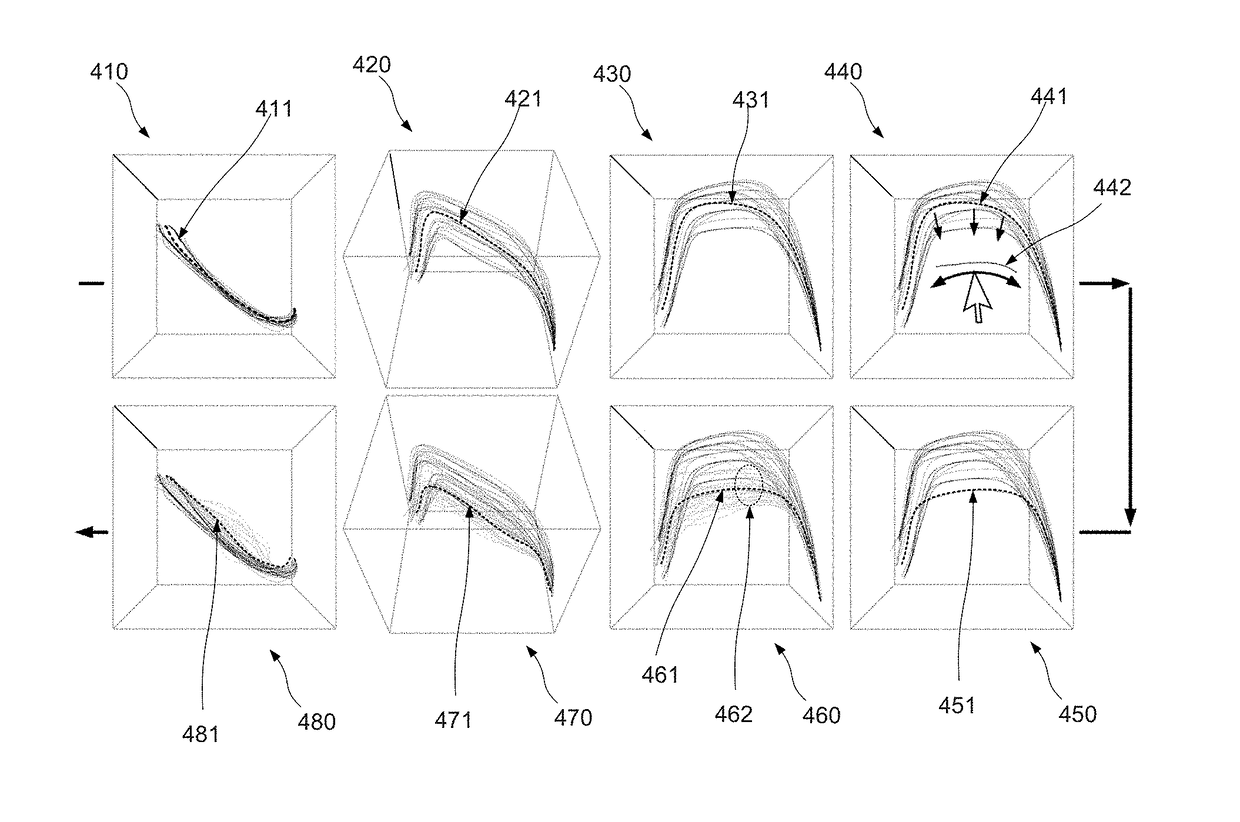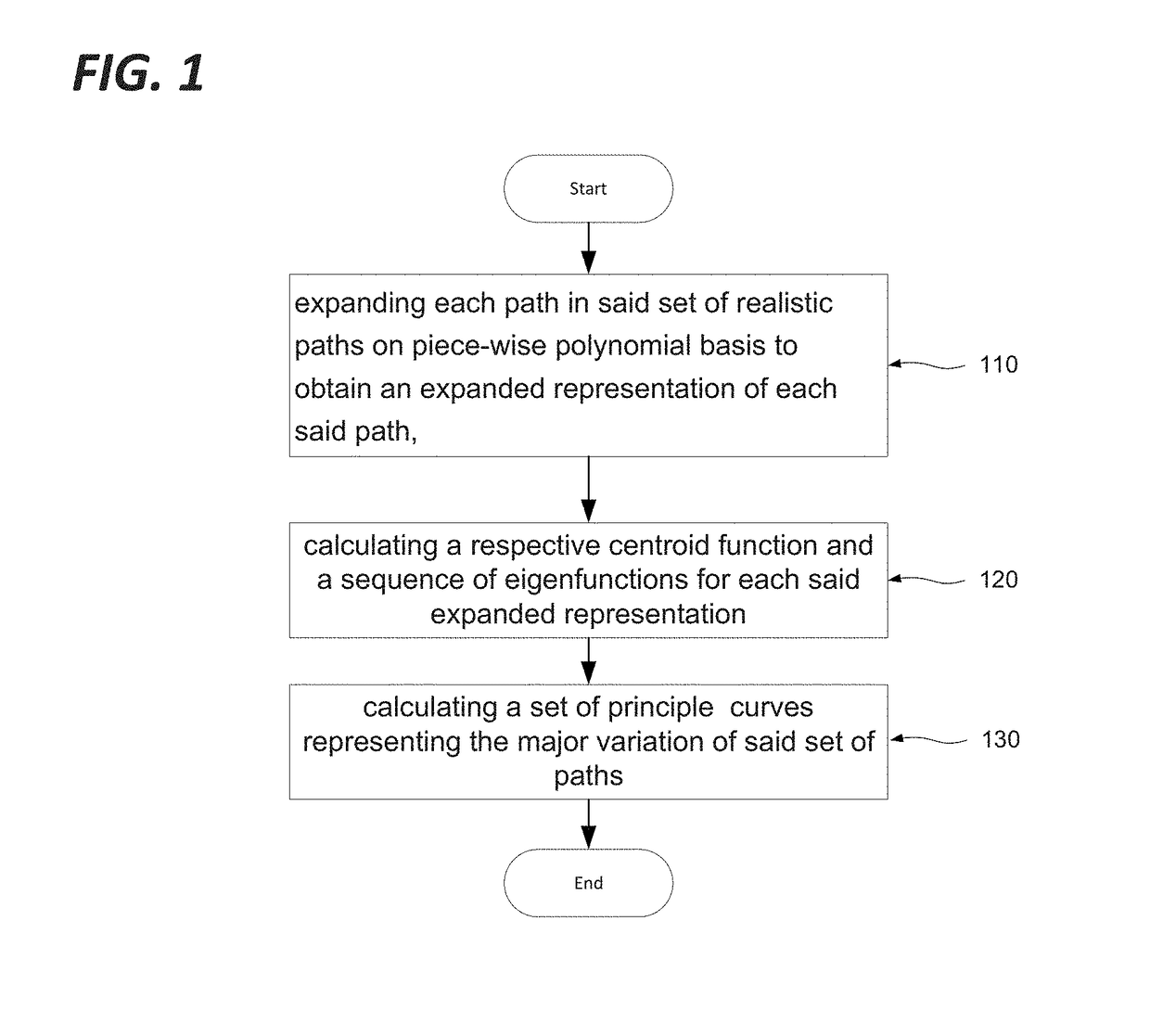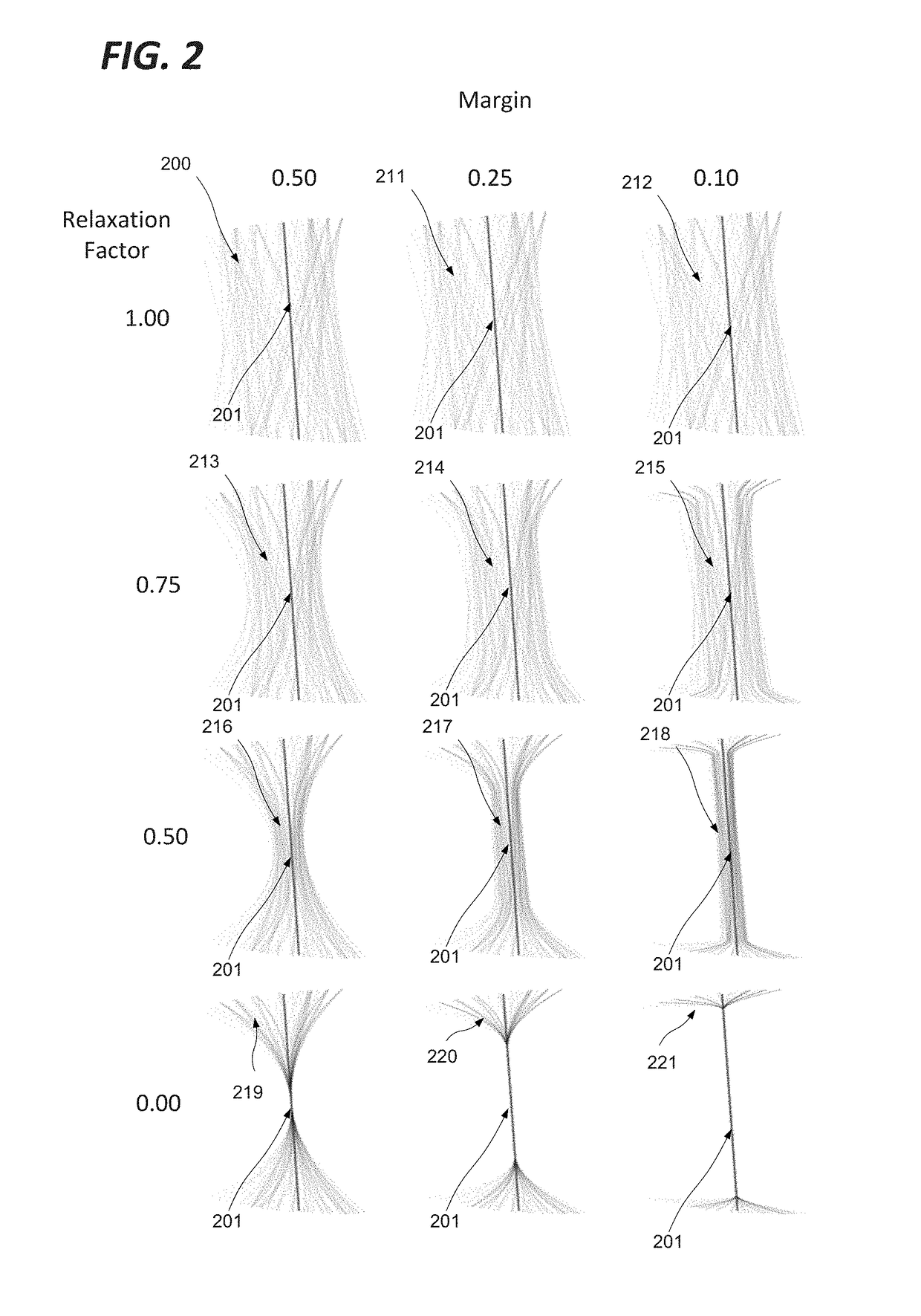Random path generation upon functional decomposition
a technology of functional decomposition and path generation, applied in the direction of 2d-image generation, instruments, data processing applications, etc., can solve the problem of major scaling problems
- Summary
- Abstract
- Description
- Claims
- Application Information
AI Technical Summary
Benefits of technology
Problems solved by technology
Method used
Image
Examples
Embodiment Construction
[0052]A path can be subdivided as a linear combination of piecewise polynomial basis functions: given a cluster (i.e. a group) of paths, it is possible to compute a centroid function (i.e. centroid path) with its associated expansion coefficients. Any member of the cluster can be then written as a sum of the centroid and a complementary term expressed on the same piece-wise polynomial basis functions. The correspondence between a path and the expansion coefficients of the complementary term is one-to-one, allowing a simple generation of arbitrary paths. Furthermore, selection of the expansion basis from the eigenfunctions of the covariance operator allows generated paths to be statistically similar to the ones already pertaining to the cluster. This new path bundling technique provides a number of advantages, in particular:[0053]The created centroid function has a mathematic significance. It corresponds to the centre path of the corresponding cluster and thus can be considered as it...
PUM
 Login to View More
Login to View More Abstract
Description
Claims
Application Information
 Login to View More
Login to View More - R&D
- Intellectual Property
- Life Sciences
- Materials
- Tech Scout
- Unparalleled Data Quality
- Higher Quality Content
- 60% Fewer Hallucinations
Browse by: Latest US Patents, China's latest patents, Technical Efficacy Thesaurus, Application Domain, Technology Topic, Popular Technical Reports.
© 2025 PatSnap. All rights reserved.Legal|Privacy policy|Modern Slavery Act Transparency Statement|Sitemap|About US| Contact US: help@patsnap.com



